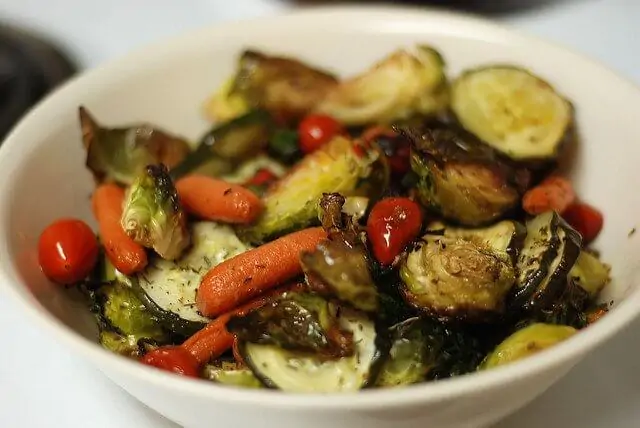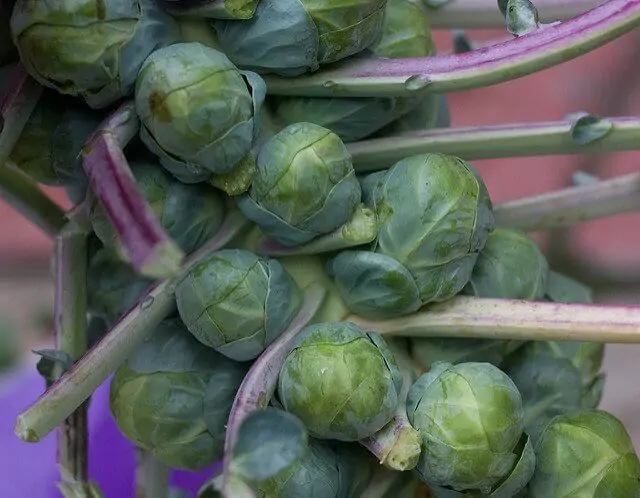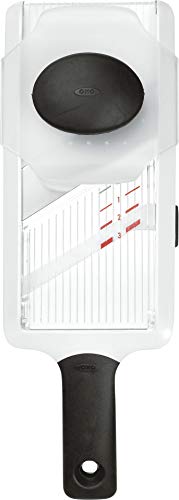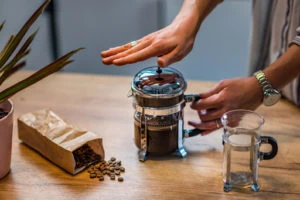
Brussels sprouts have been at the center of many a Christmas dinner. A few particularly adventurous individuals out there enjoyed them immensely, but most of us rather disliked the idea of chewing down one of those little cabbages (especially when we were younger).
With time, many of us grew to respect—even enjoy—the complex flavor of Brussels sprouts. Used in a variety of different dishes, they might even steal the limelight from other veggies!
Cooked in a variety of ways—whether they’re boiled, steamed, grilled, or stir fried—the Brussels sprout is a dynamic vegetable indeed. But, what’s the best way to clean and cut your Brussels sprouts?
Step 1: Remove the sprouts from the stem
Sometimes, in fancier supermarkets, you’ll see Brussels sprouts still attached to the stalk. This alien-looking display may leave some of you questioning everything you knew about Brussels sprouts, but there’s no need for concern. These will more than likely be extremely fresh. It also gives you the option to pull off the more desirable sprouts—you really want to be going for those big, chunky ones. Chop away at the remnants of the stalk when you get them home, as these can be a bit gnarly to chew on.
You’ll find that stems will vary from thick to thinner. Cut the stem off and toss it into a compost bin. You’ll lose some leaves by removing the stem, but these are, more often than not, the very leaves you don’t want to keep. They’ve often wilted or become discolored and therefore lack the flavor of a real Brussels sprout.

Step 2: Clean the loose sprouts
Whether you buy your sprouts still attached to the stalk or loose, you’ll need to cut off the stem at the bottom of a Brussels sprout. Also pull off a few of the outer layers. These are the dirtiest parts of the Brussels sprout. Next, you should rinse the remaining layers to ensure they are completely clean. Do this before you’ve cut them, because any unsavory bacteria on the outer layers will find its way onto your cutting board, contaminating it for when you begin to chop the cleaner interior layers.
As with any vegetable, it’s important to thoroughly clean your Brussels sprouts. A failure to do so can have rather untasty consequences. If you want to be very safe, you should rinse them in cold water and scrub each sprout individually. This will ensure you remove any dirt or dust that’s been lingering on the outer leaves.
Check out Veggie Wash Natural Fruit & Vegetable Wash at Amazon
Step 3: Cut your sprouts
Before you take your chef’s knife to the sprouts, you need to consider how you’re going to serve them. Depending on how you plan to use your Brussels sprouts, you have a number of options on how to cut and clean them. You can leave them whole for boiling or roasting, or peel off the leaves for salads and slaw.
Whole sprouts
For the traditional Christmas dinner whole sprout, you need to cut a small X into the base of the sprout. The bigger the sprout, the deeper the X should be. This allows for heat to make its way into the core and cook it sufficiently throughout.
If your sprouts are small, you can leave them whole when cooking. Larger ones should be halved, or even quartered, to ensure an even cooking time for all the sprouts. You’re inevitably going to lose some leaves when cutting Brussels sprouts, but that’s okay! They’re a layered vegetable, so there are plenty more leaves underneath.
Toss any discolored leaves into the garbage disposal. They won’t taste good.
This is also how you’d prepare sprouts for roasting. Yes, that’s right—you can roast them. Just season with a bit of olive oil and salt, put them into the oven, and enjoy the results!
Sprouts for salads and coleslaw
Many people like to make Brussels sprout salads and coleslaws. This is done by removing the stem and peeling off the individual layers from each sprout. Place the individual leaves in a colander and rinse them together in cold water. This will ensure that they are properly cleaned, which significantly reduces the risk of ingesting unsavory bacteria.
Check out the Bellemain Micro-perforated Stainless Steel 5-quart Colander at Amazon
Dry the leaves off and mix them up with some onion, salt, carrot, and whatever else you fancy in your slaw or salad, and you have a delicious brussel sprout-based recipe.
Sprouts to fry or sautée
If you are frying or searing your Brussels sprouts, trim off the stems and cut them into halves lengthwise. For sautéing, you can either halve them, slice them, or pull the leaves from the core.
Check out the OXO Good Grips Mini Vegetable Slicer at Amazon
Heat up some oil in a cast iron skillet, add your sprouts and seasonings, cook about 7 or 8 minutes (or until until tender), and prepare to be wowed!
Step 4: Prepare and Enjoy!
For more great tips for cooks and bakers, see my posts on how to use ice cream scoops for baking, how to make buttermilk with almond milk, and how to cook pig in the ground!
And, for other fun recipes, see my recipes section for instructions on everything from the best soups for a sore throat, to my favorite cast iron skillet pizza!
Got extra blackberries you want to store? Here are my tips on properly freezing blackberries for later. And this post is all about finding the best electric can opener for large cans.







